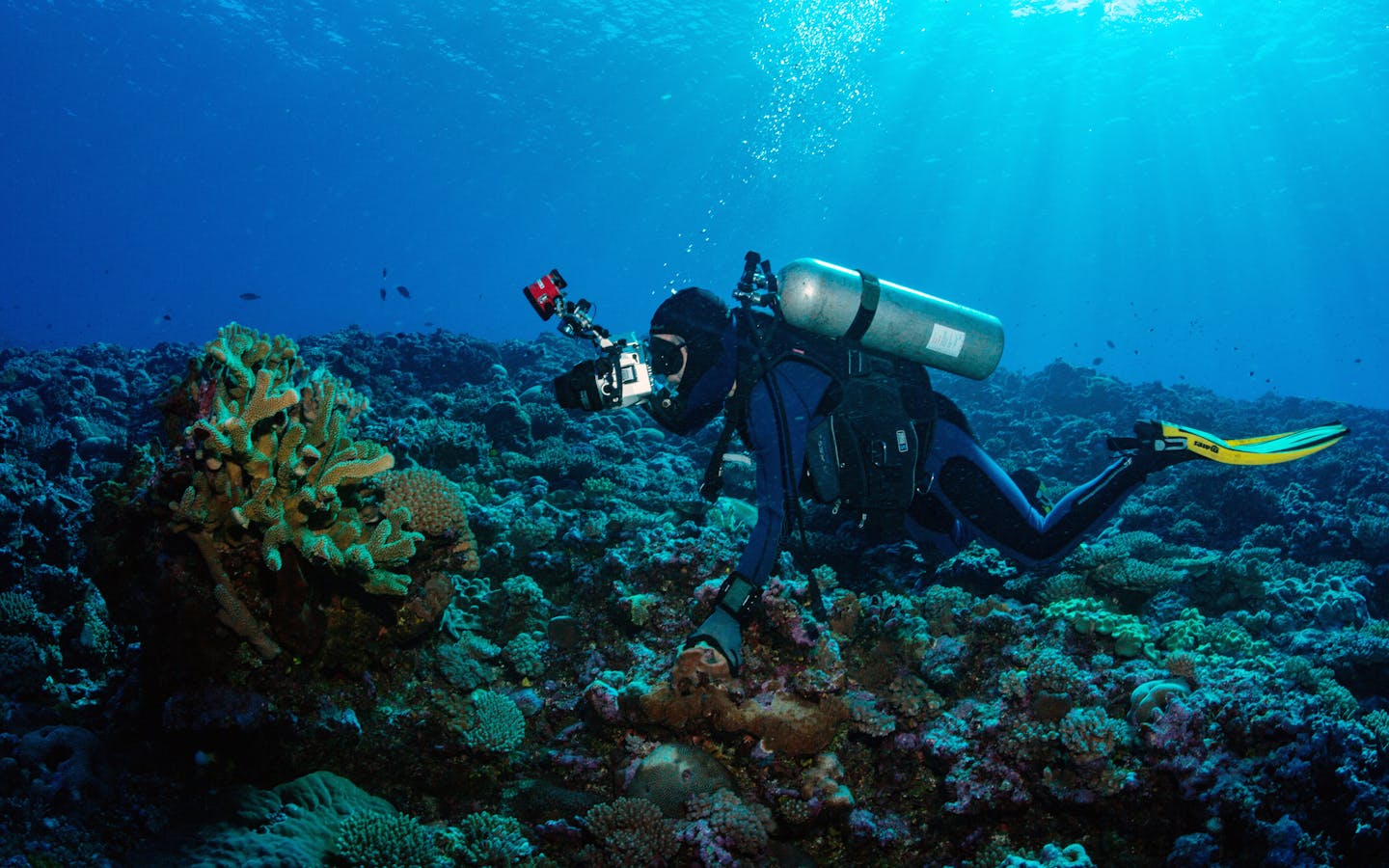By Mark Erdmann and Gerry Allen
June 2, 2017
Editor’s note: Last month, a team of conservationists set sail from the island of Fiji. Their mission: to survey marine life in the Lau Islands, an unheralded group of islets scattered over thousands of square miles of the South Pacific. (Read the first story in the series here.)
Researchers routinely find new marine species — a testament to how little we still know about our oceans.
This expedition was no exception. In this post, team members Mark Erdmann of Conservation International and renowned ichthyologist Gerry Allen report on some of the new species they believe they found during their dives in this little-explored part of the world.
Though Fiji’s reef fish fauna has been relatively well-researched in recent decades (with just over 1,000 species recorded as of the start of our survey), we were nonetheless optimistic of uncovering at least a few hidden gems as we combed the reefs.
To our delight, Lau proved to be highly biodiverse in reef fishes, and we recorded 527 species over the 11-day trip. Included in this total were six to nine new or potentially new species, as well as several previously known but still undescribed species.

The Lau Islands survey found this striking coral dwarf goby, a species previously unknown to science.
Unsurprisingly, most of these new and potentially new fish species were small gobies that are often overlooked by divers and even by many reef scientists. These included a number of coral dwarf gobies in the genera Trimma and Eviota,
as well as a sand goby in the genus Grallenia. There was also a subtly beautiful damselfish in the genus Pomacentrus that we believe to be new and are currently comparing with its nearest relative.
We also managed to photograph
and collect several triplefins in the genus Enneapterygius and a dartfish in the genus Parioglossus that are all potentially new and currently under further investigation.
In addition to the abovementioned species that
we were able to both photograph and collect, we also observed three different deep-dwelling fish species that proved too shy and secretive to collect. In each case, we observed them only on a single dive, and managed at best a blurry photo before
the fishes darted away. This was particularly frustrating in that these were all larger and quite beautifully colored fishes, including a rare slopefish, a cave-dwelling dottyback and a schooling basslet in the genus Luzonichthys.
A final fish worthy of mention in the “new discoveries” bin is the coral dwarfgoby Trimma anthrenum. When we encountered this strikingly blue-eyed goby in deep caves, we were convinced we had a new species and proceeded to collect
several specimens. Immediately upon returning to Suva, we emailed photos to the world expert on these fishes, Dr. Rick Winterbottom at the Royal Ontario Museum. Rick replied almost instantaneously — while he immediately recognized the fish as
being a goby he’d described in 2006 from Fiji, he was amazed at the blue eyes shown clearly in our in situ photos. Though not quite as satisfying as a new species, we were nonetheless thrilled to be able to contribute to science the
only known live color photographs of this gorgeous goby.
What other secrets lie undetected in the Lau? We’re keen to return for more surveys in the near future.
Slideshow: New species in the Lau Islands
Mark Erdmann is Vice President of Asia-Pacific Marine Programs for Conservation International. Gerry Allen is a world-renowned ichthyologist.
Other stories in this series
» The Lau Islands: Dive in to a little-explored region
» Unexpected finds: Survey sheds new light on reefs
» Chief’s view: Local people hold key to protecting reefs
» Lau reefs offer clues to protecting coral
» In Lau, a key species in decline
»
300 hours underwater
»
Epilogue: Discoveries in the Lau Islands will pave the way for Fiji's conservation future

